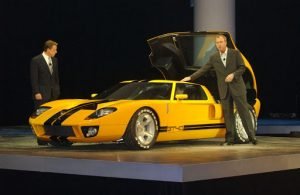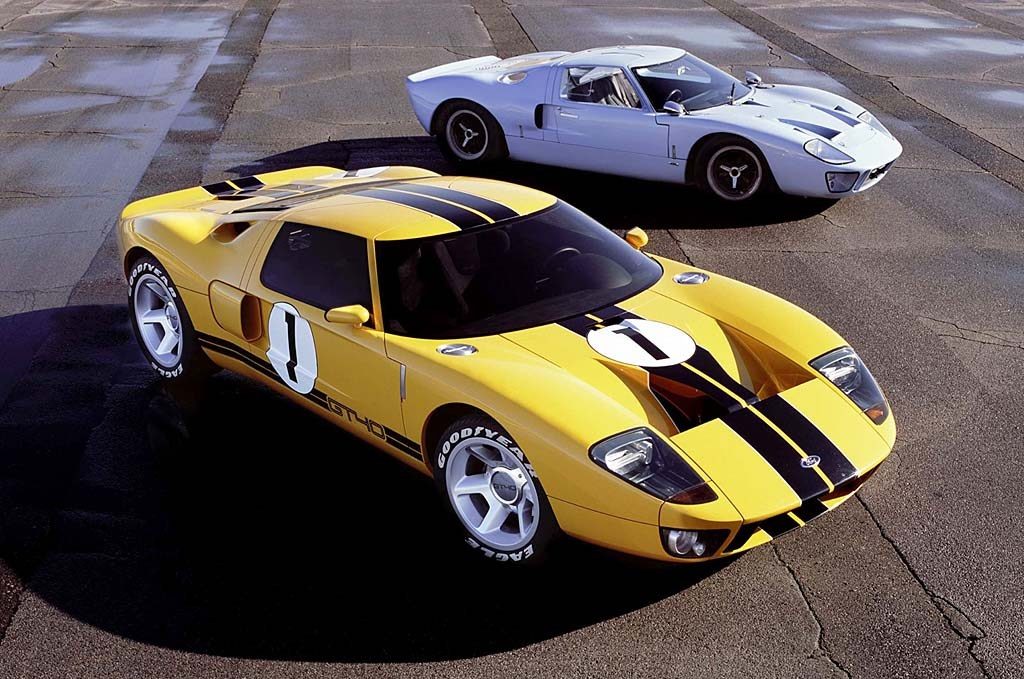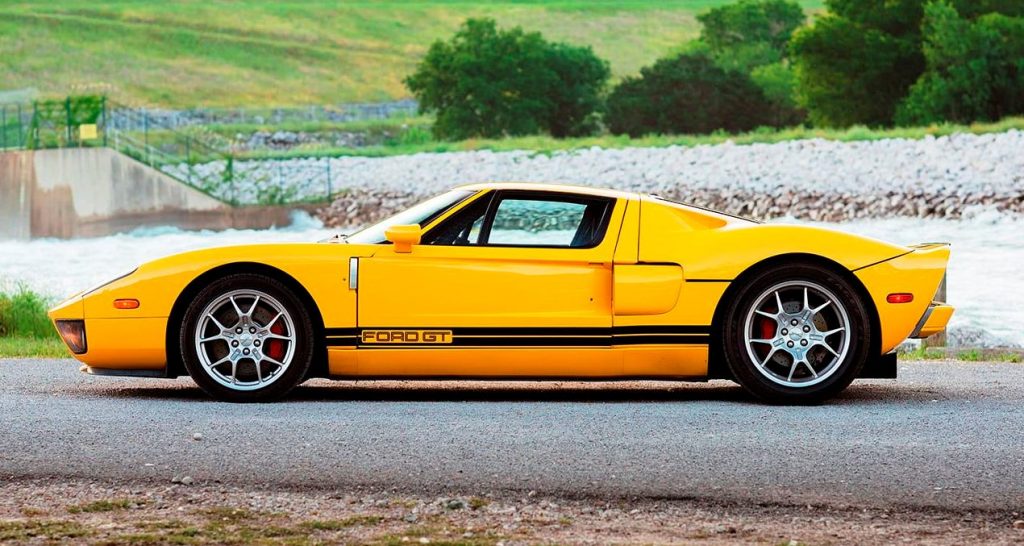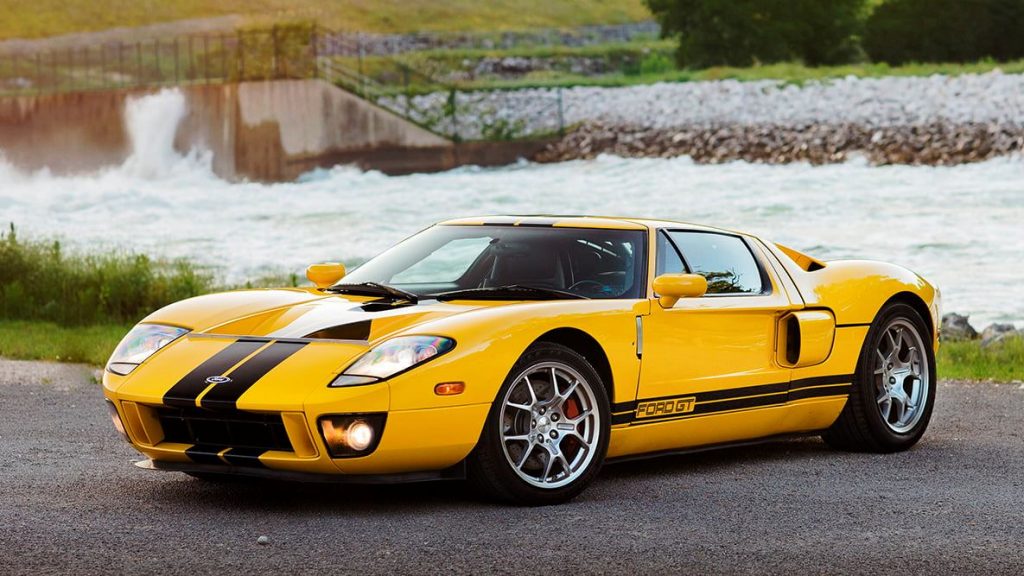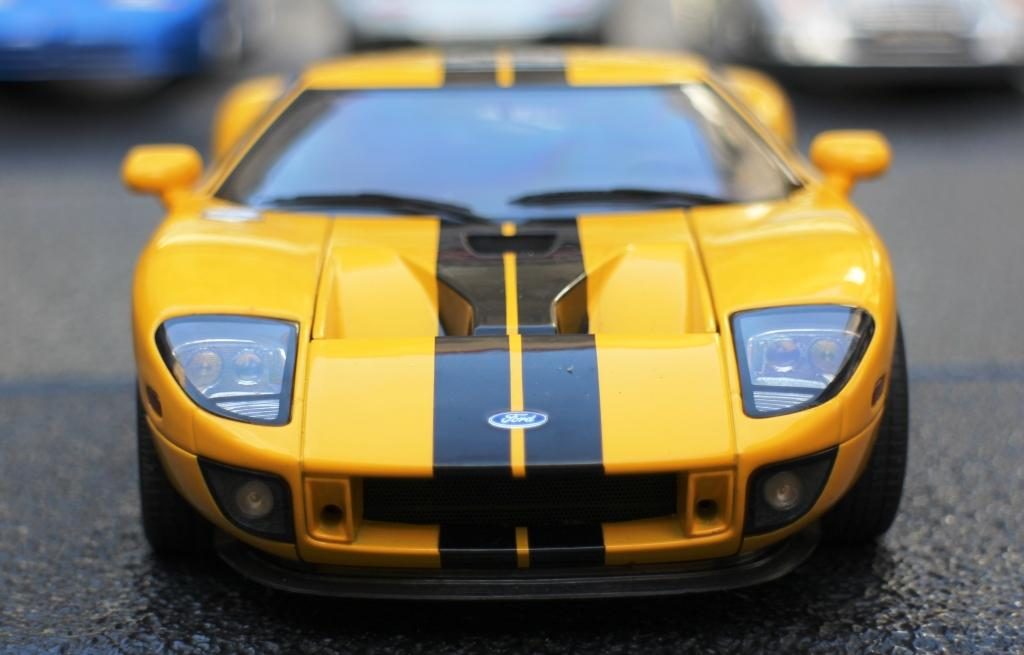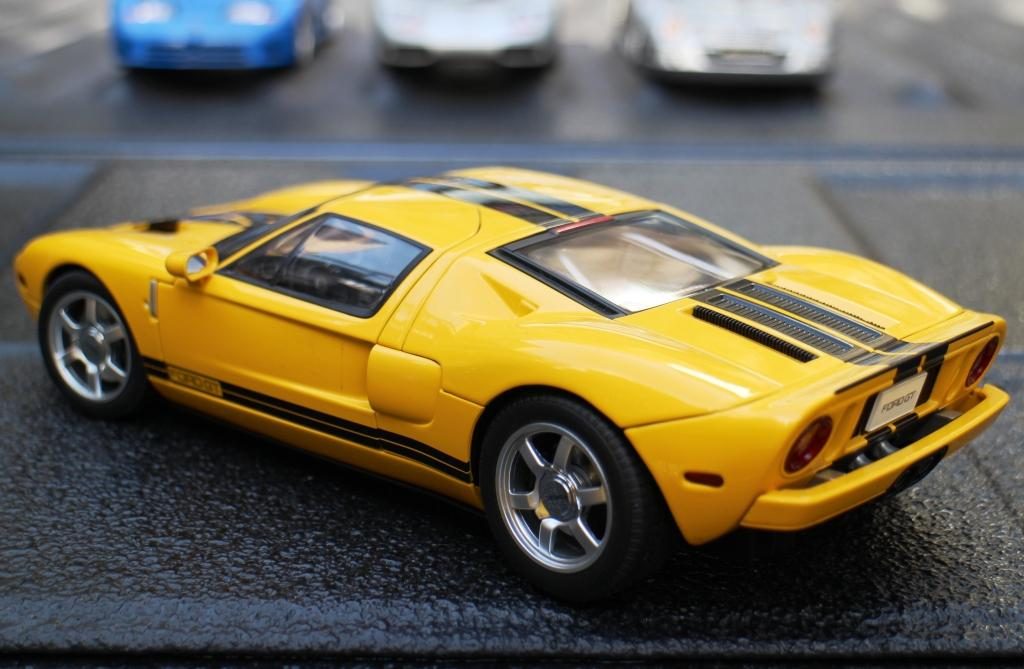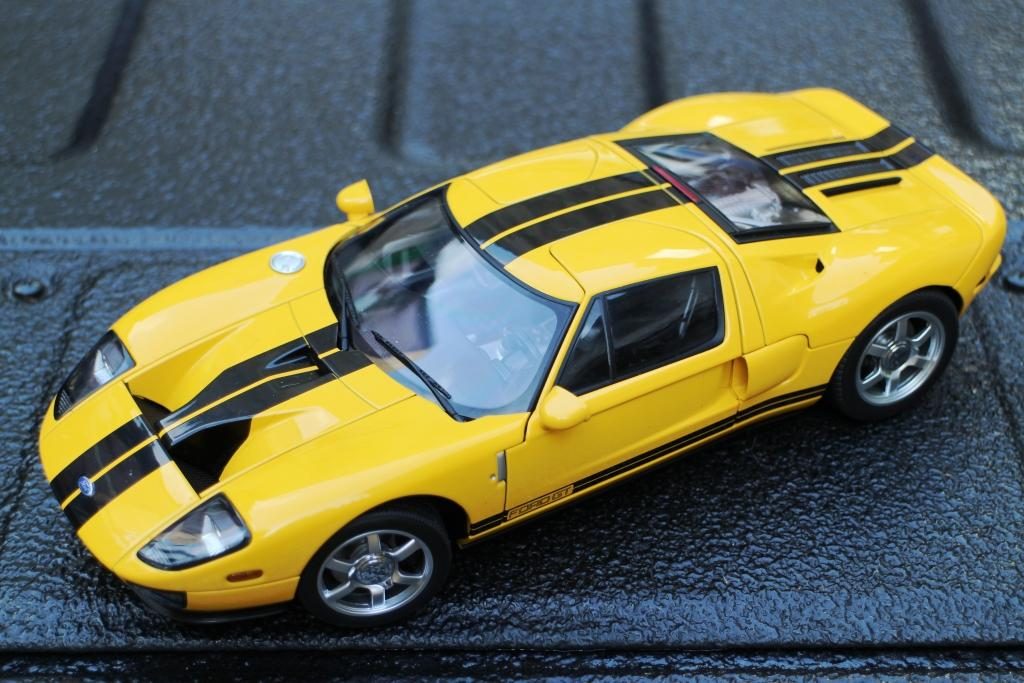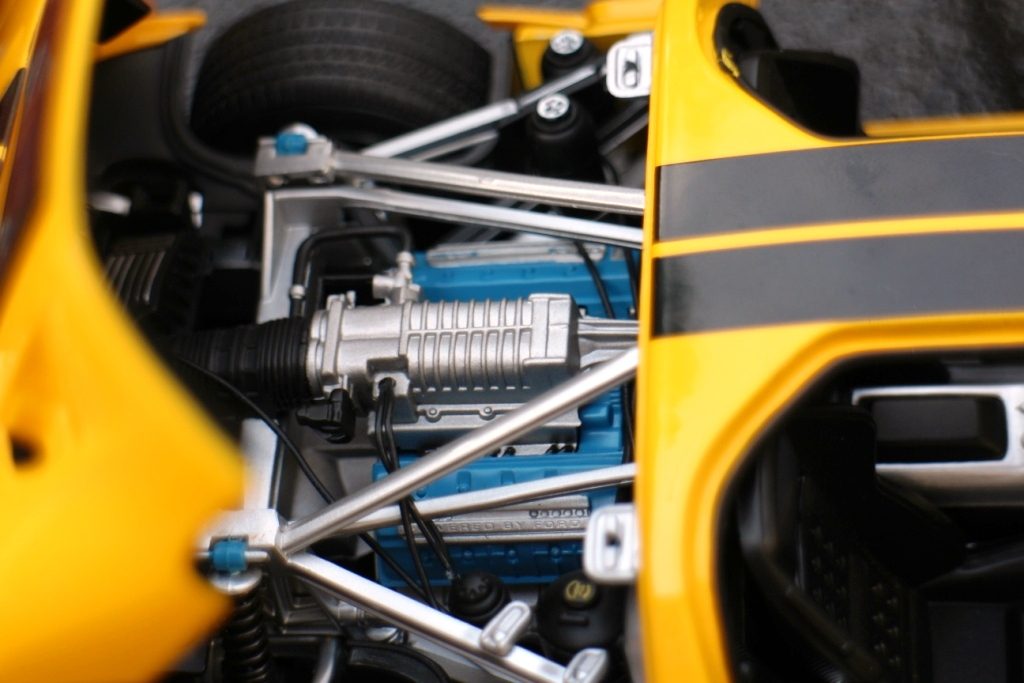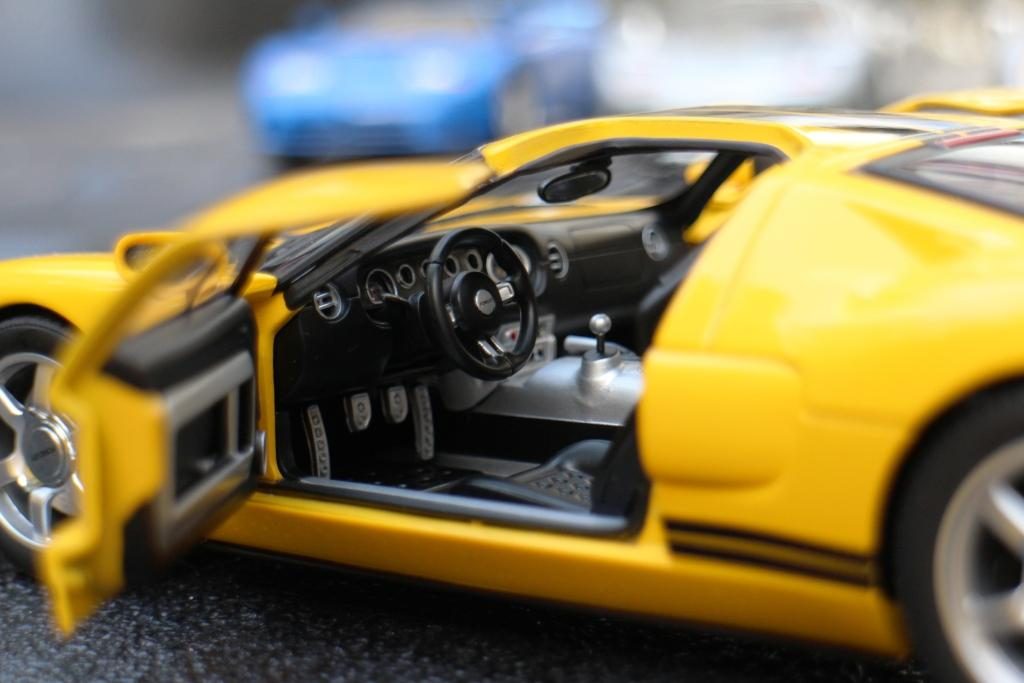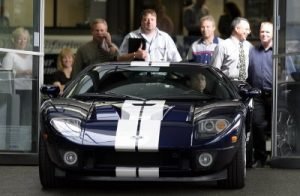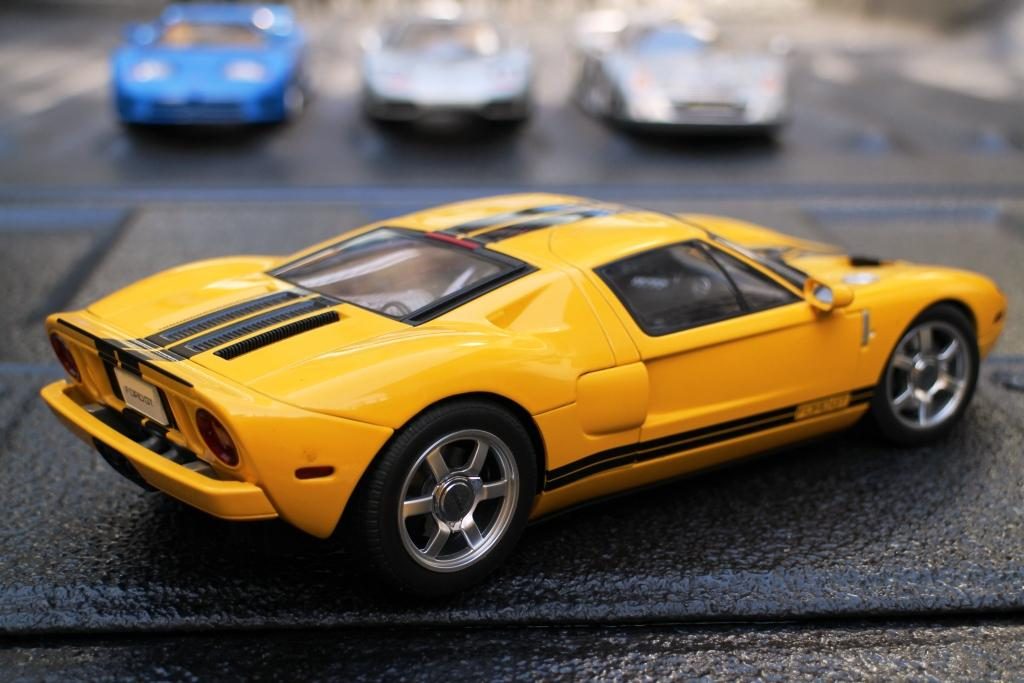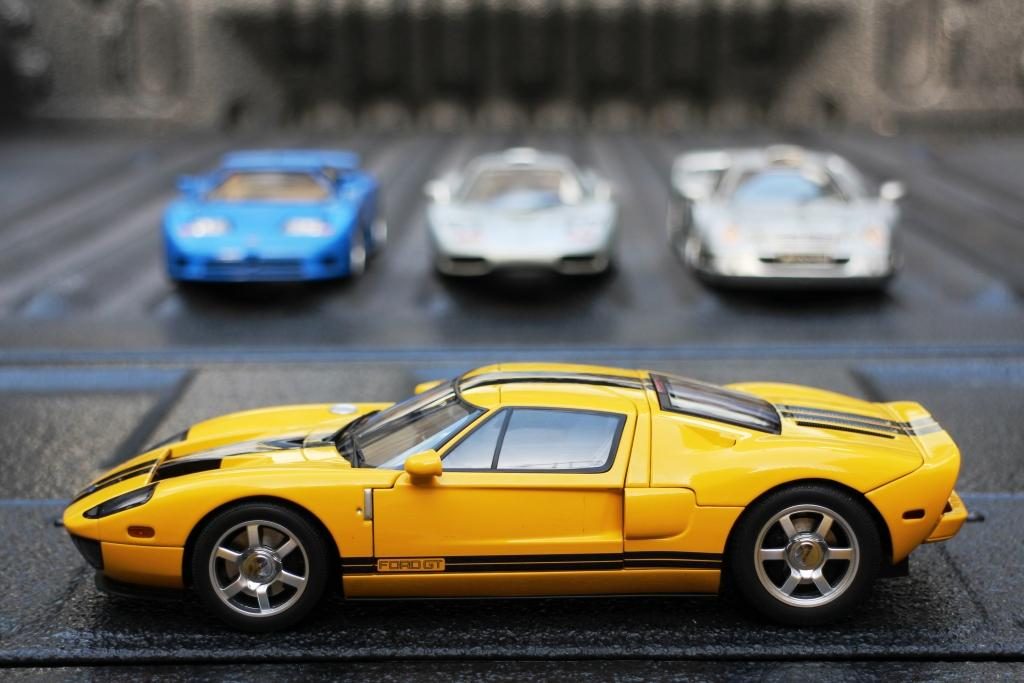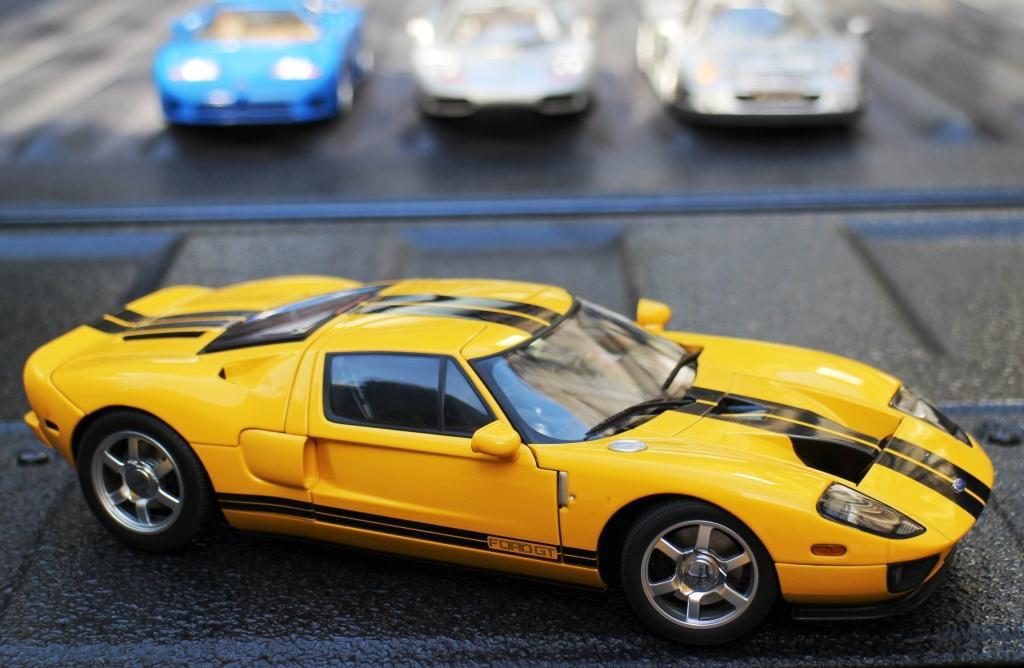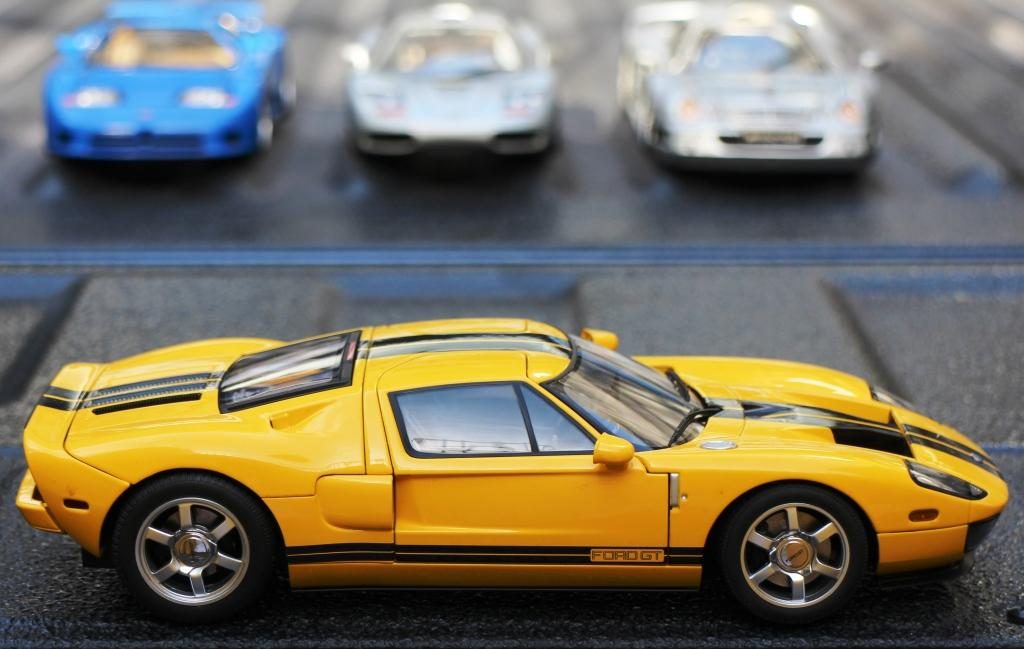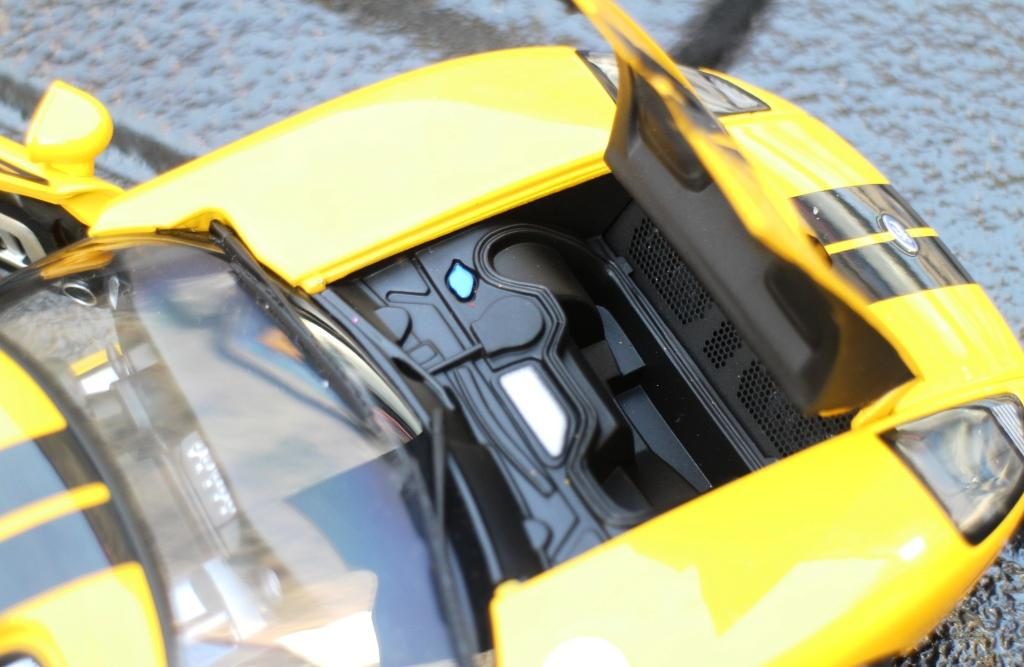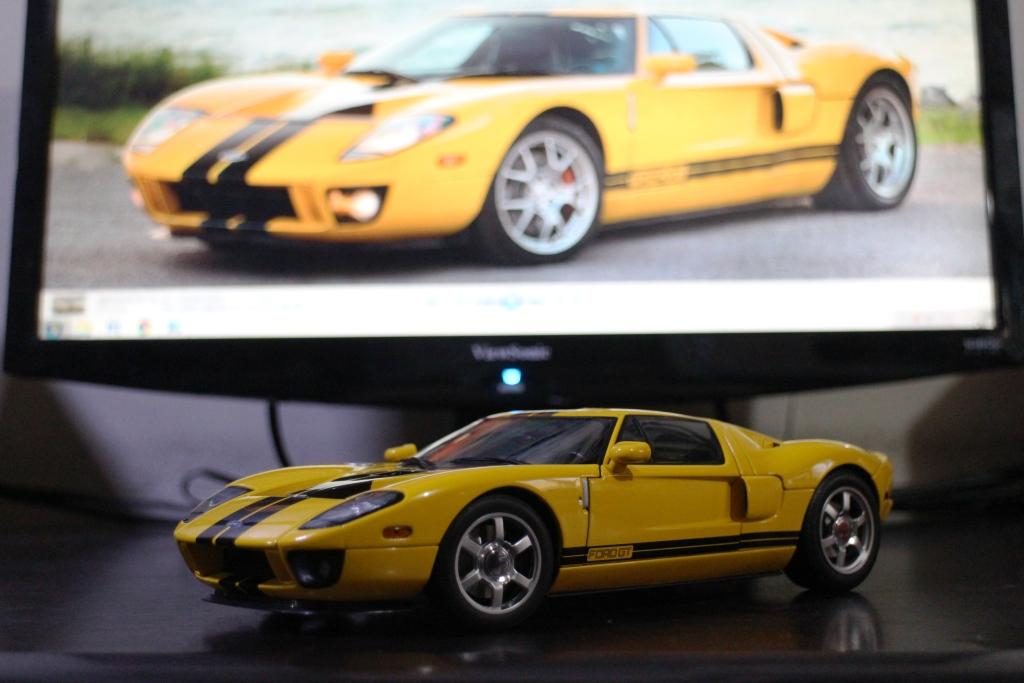At the 2002 North American International Auto Show, the Ford Motor Company unveiled a new mid-engine two-seat sports car concept that was initially dubbed as the GT40. It was designed in anticipation of the automaker’s centennial year and as part of its drive to showcase and revive its “heritage models” such as Mustang and Thunderbird. The GT40 was designed to evoke the Ford GT-class race cars that won Le Mans in 1966.
Camilo Pardo, the then head of Ford’s “Living Legends” studio, is the chief designer of the GT40 under the guidance of J Mays. Racing legend Carroll Shelby was brought in by Ford to help develop the GT, which included performance testing of the prototype car. While the concept car was under development, the project was called Petunia, and the development was later shown in Discovery Channel’s hit TV show “Rides”.
However, Safir Engineering, a British company that built continuation GT40 cars in the 1980s, owned the “GT40” trademark at that time. After the production of the continuation cars ended, they sold the excess parts, tooling, design, and trademark to a small Ohio-based company called Safir GT40 Spares. This company licensed the use of the “GT40” trademark to Ford for the initial 2002 show car but when Ford decided to produce the car, negotiations between the two firms failed as Ford agree to the US$40 million demanded by Safir GT40 Spares. Thus, the subsequent production cars are simply labeled as the Ford GT.
The GT is similar in outward appearance to the original GT40, but is bigger, wider, and taller than the original. Although the cars are visually related, structurally, there is no similarity between the modern GT and the 1960s GT40 that inspired it. Since it was built as part of the company’s 100th anniversary celebration, the left headlight cluster was designed to read “100”.
The Ford GT features many technologies unique at its time including a superplastic-formed frame, aluminum body panels, roll-bonded floor panels, a friction stir welded center tunnel, covered by a magnesium center console, a “ship-in-a-bottle” gas tank, a capless fuel filler system, one-piece panels, and an aluminum engine cover with a one-piece carbon fiber inner panel. Brakes are four-piston aluminum Brembo calipers with cross-drilled and vented rotors at all four corners. When the rear canopy is opened, the rear suspension components and engine are visible.
The 5.4 -liter longitudinal rear-mounted Modular V8 engine is an all-aluminum alloy engine with an Eaton 2300 Lysholm screw-type supercharger. It features a forged rotating assembly, aluminum block, dry sump oiling system, double overhead camshaft (DOHC), 4 valves per cylinder, and a power rating of 550 hp at 6,500 rpm and 678 Nm of torque at 4,500 rpm. Power is routed to a Ricardo 6-speed manual transmission with helical limited-slip differential to launch the GT from zero to 100 km/h in just 3.3 seconds.
Three pre-production Ford GTs were shown to the public in 2003 as part of Ford’s centenary celebrations and delivery of the production cars began in the fall of 2004. The first private sale was completed on August 4, 2004, when former Microsoft executive Jon Shirley took delivery of his Midnight Blue 2005 Ford GT, the first production car with Chassis #10, at the Pebble Beach Concours d’Elegance charity auction after bidding over US$557,000.
Ford’s mid-engine sports car was in such high demand after its introduction that dealers demanded an additional US$100,000 over the manufacturer’s suggested retail price (MSRP) of US$139,995. Optional equipment available included a McIntosh sound system, racing stripes, painted brake calipers, and forged alloy wheels adding US$13,500 to the MSRP.
Between 2005 and 2006, the Ford GT was assembled at Mayflower Vehicle Systems in Norwalk, Ohio and was painted and the assembly continued at Saleen Special Vehicles facility in Troy, Michigan. The engine was built at Ford’s Romeo Engine Plant in Romeo, Michigan, while engine and transmission installation along with seats and interior finishing was handled in the SVT building at Ford’s Wixom, Michigan plant.
Of the 4,500 GTs originally planned for production, approximately 550 cars were built in 2004, nearly 1,900 in 2005, and just over 1,600 until production ceased in September 2006, for a grand total of 4,038 cars, 462 cars short of the target. The final 11 car bodies manufactured by Mayflower Vehicle Systems were disassembled, and the frames and body panels were sold as service parts.
Thankfully, even after Ford stopped production of the GT, Auto Art continued the production of the mid-engine sports car, albeit in beautiful 1:18 scale. As expected of Auto Art’s Millenium line, the fit-and-finish and the attention-to-detail are outstanding. The level of realism of the model car is stunning as its yellow color.
An Auto Art Millenium car model is NOT inexpensive but it is worth every penny (or centavo, since we’re using Philippine currency). Our yellow Ford GT is one of the model cars in our collection that we’ll have difficulty parting with.
To review the scale model super cars that we have previously posted here in the Power Wheels website, please click “The Rack” button on the header bar near the top right of your screen (if you’re using a PC, laptop or tablet), or type “The Rack” on the Search bar if you’re using a mobile phone. We hope you enjoyed the super cars we featured this week including the Bburago 1991 Bugatti EB 110 GT (May 4, Monday), Maisto 1993 McLaren F1 (May 5, Tuesday), MiniChamp 2001 McLaren Mercedes MP4-16 (May 6, Wednesday), and the Maisto Mercedes-Benz 1997 CLK GTR that we featured yesterday.
 Power Wheels Magazine A Notch Above
Power Wheels Magazine A Notch Above

